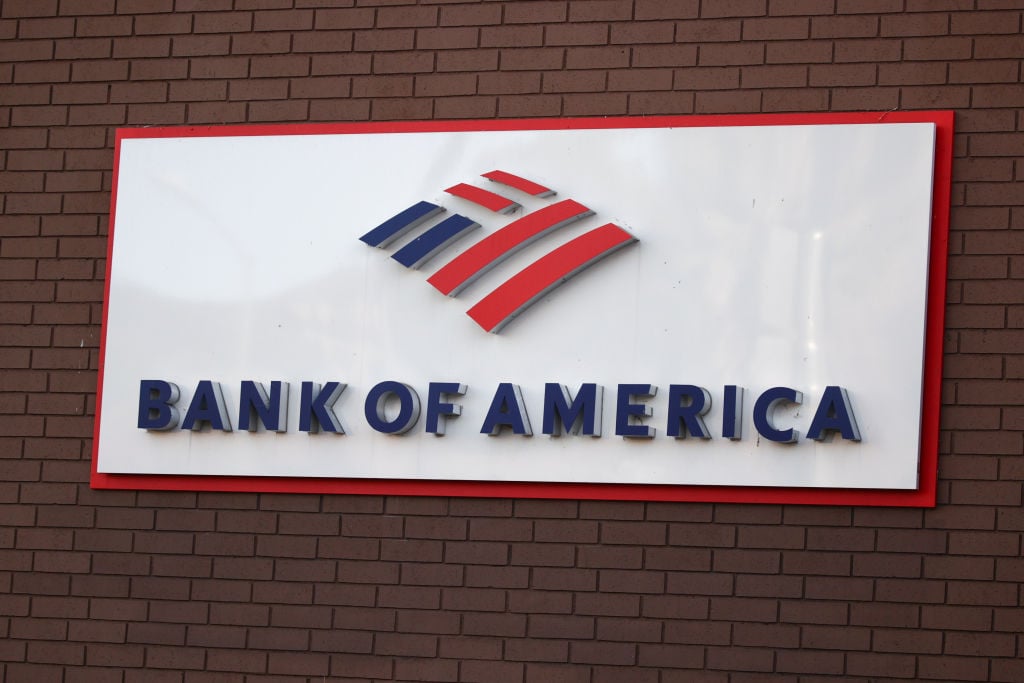If you'd asked someone a decade ago how Bank of America (BAC +0.50%) and JPMorgan Chase (JPM +0.99%) would be doing now, you would've gotten a full range of answers. Some would have thought that one or both of these financial institutions wouldn't have been able to survive the aftermath of the financial crisis, while others would have expected them to struggle for quite a long time.
Instead, both BofA and JPMorgan have not only survived but thrived in the post-financial-crisis banking world, cementing their positions atop the industry and moving forward with plans for further growth. Yet financial stocks took a tumble in late 2018 on concerns about the future health of the economy and the direction of interest rates. That has investors wondering which bank stocks are best poised to do well in a tougher environment. Below, we'll look at Bank of America and JPMorgan and try to figure out which one's the better buy right now.

Image source: Bank of America.
Stock performance and valuation
Both Bank of America and JPMorgan have struggled over the past year. JPMorgan's share price has fallen more than 10% since January 2018, and BofA is only a tiny bit better, suffering a 9% price decline over the same period.
The combination of solid earnings performance and weak share prices has made bank valuations more attractive than they've been in a while. When you look at recent results, both Bank of America and JPMorgan trade at trailing earnings multiples of around 11, down from the high teens just last spring. Valuations based on projections for the near future are also similar, although BofA's forward multiple of just over 9 is minimally less than JPMorgan's, which comes in below 10.
Based on those assessments, the two banks look quite similar. However, when you look at book value, Bank of America stands out with a cheaper valuation. Investors can buy BofA shares at less than 1.2 times book value, compared to almost 1.5 for JPMorgan. The disparity has narrowed recently, but it's still enough to give Bank of America a slight edge.
Dividends
After going through a dividend drought in the immediate aftermath of the financial crisis, shareholders can now breathe easy. Both banks have delivered strong dividend growth, and JPMorgan comes in with a yield of 3.1%, nicely above the roughly 2.1% yield that Bank of America offers.
The advantage that JPMorgan has shows just how much it emphasized returning things to normal following the crisis. The bank wasn't entirely happy having to cut its dividend in the first place, and it's been adamant in treating income investors well. The bank's most recent boost amounted to more than 40%, taking the quarterly payment up to $0.80 per share, and that marked the ninth increase in eight years.
Bank of America hasn't been a slouch, with its two most recent boosts resulting in the doubling of its dividend since mid-2017. Yet BofA was slower getting out of the gate in restoring its past dividend, and even now, what the bank pays is just a shadow of its pre-crisis payouts. For dividend investors, JPMorgan has demonstrated its superiority over Bank of America.
Growth prospects and risk
Even after a tough 2018, both Bank of America and JPMorgan have seen their shares bounce back in 2019. Bank of America in particular responded favorably to news about its fourth-quarter financial results, which included a number of promising items. Solid loan growth showed that the banking giant is finding profitable ways to deploy its capital, and although rising interest rates have forced BofA to pay more on its deposits, the increase has been relatively slow and still provides a huge interest margin. More-efficient operations have decreased noninterest expenses, and a solid reserve against loan losses leaves Bank of America in much better position than it was entering the financial crisis. Between larger dividends and stock buybacks, most investors are pleased with BofA's prospects.
JPMorgan's fourth-quarter results weren't quite as positive, but they still showed some signs of strength. The bank's consumer and community banking divisions did reasonably well, and investment banking activity was on the rise. What weighed on performance, though, was a poor showing on the investment trading front, as JPMorgan suffered a big setback on fixed-income trading. Higher expenses also hurt profitability, causing the banking giant to miss estimates for both revenue and earnings. Yet JPMorgan has also aggressively repurchased shares and returned capital to investors through dividends, and many saw the brief share-price pullback as a buying opportunity.
Which bank reigns supreme?
Bank of America has worked hard to restore its reputation, and the strides it's taken to expand its business have been highly successful. JPMorgan still has an edge on the dividend front that's worth paying a bit higher of a valuation for, but if BofA's growth prospects outpace JPMorgan's, it won't take much for the Charlotte-based bank to catch up to its New York counterpart.
Check out the latest Bank of America and JPMorgan Chase earnings call transcripts.







